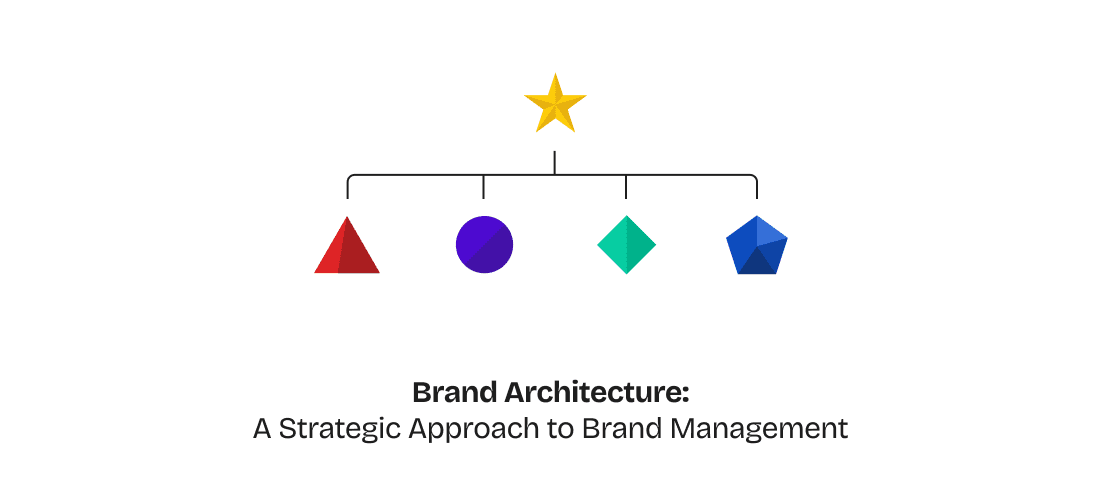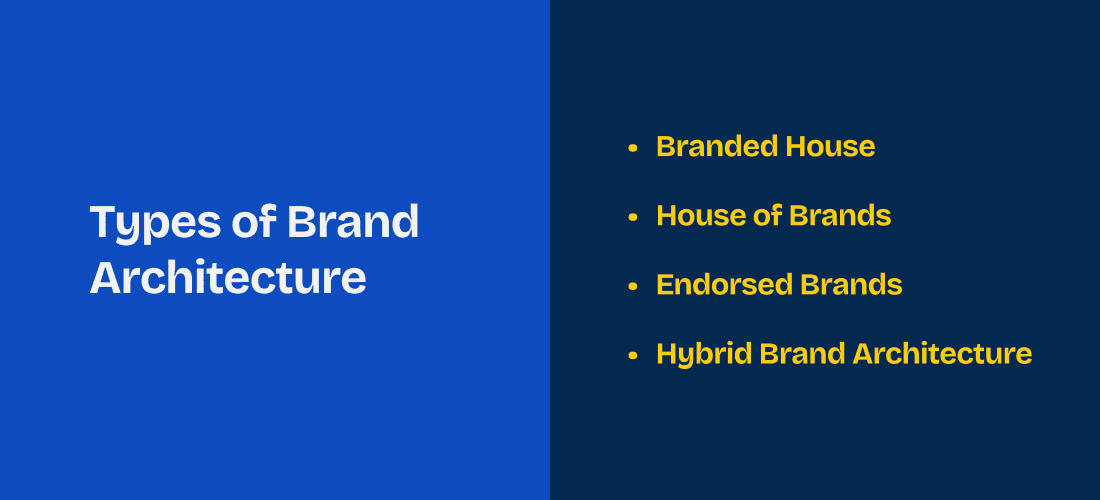


Feb 4, 2025

What is brand architecture, and how does it impact brand management? Did you know that Garnier is a sub-brand under the L’Oreal brand? So is Maybelline New York and Lancome, making L’Oreal the parent company of major players in the skin care industry. This style of marketing is what we will discuss to better understand how a skilled brand architecture can build brands to great heights.
Brand architecture is the strategic framework that defines how different brands or products within an organization relate to each other. It serves as a roadmap for how a company wants to be perceived by consumers and how its various brands should be positioned.
A well-defined architecture provides several benefits for a business, including:
In essence, we will be discussing a crucial component of successful brand development services that helps businesses build and maintain strong, cohesive brands that resonate with their target audience.
Brand architecture is a complex concept that involves several key elements. One of the most important aspects of brand architecture is the different levels of branding that can exist within an organization.

This is the overarching brand that represents the entire organization. It is the most fundamental level of branding and sets the tone for all other brands within the company.
Example: Samsung is a corporate brand that encompasses a wide range of products, including smartphones, televisions, home appliances, and more.

Product brands are individual brands associated with specific products or services. They may be closely aligned with the corporate brand or have a more distinct identity.
Example: Within Samsung, there are various product brands, such as Galaxy (for smartphones), QLED (for televisions), and Bespoke (for home appliances). These product brands have their own distinct identities and marketing campaigns.
Sub-brands are brands that are part of a larger product brand. They may have a more focused or specialized identity.
Example: Within the Samsung Galaxy product brand, there are sub-brands like Galaxy S, Galaxy Z, and Galaxy A, each targeting different segments of the smartphone market.
The relationship between these different levels of branding is known as brand hierarchy. A well-defined brand hierarchy helps brand marketing services organize the various brands within an organization and ensures that they work together effectively.

There are several different types of brand architecture that businesses can adopt. The choice of brand architecture depends on various factors, including the company’s business strategy, target audience, and the nature of its products or services. A well-defined brand architecture can help to streamline brand management efforts and create a more cohesive and effective brand strategy.
Here are some of the most common:
In a house of brands architecture, each product or service has its own distinct brand identity, separate from the corporate brand. This approach is often used by companies with diverse product portfolios or that want to target different market segments.
Example: Procter & Gamble is a house of brands company, with well-known brands such as Tide, Pampers, and Gillette.
In a branded house architecture, all products or services are branded under the same corporate brand. This approach can be effective for building a strong, recognizable corporate brand and creating a sense of unity across the organization’s product offerings.
Example: Google is a branded house company, with all of its products (e.g., Search, Gmail, YouTube) branded under the Google umbrella.
In an endorsed brand architecture, products or services are branded under the corporate brand, but they also have their own individual identities. This approach can help to leverage the strength of the corporate brand while also allowing for some product-specific differentiation.
Example: Marriott International uses an endorsed brand architecture with various hotel brands such as Marriott, Ritz-Carlton, and Sheraton.
A company might choose to have a house of brands structure, where each product brand is completely independent and has its own distinct identity. This approach can be effective for companies with diverse product portfolios, or that want to target different market segments.
On the other hand, a company might opt for a branded house architecture, where all products are branded under the same corporate brand. This approach can be useful for building a strong, recognizable corporate brand and creating a sense of unity across the organization’s product offerings.
By understanding the different levels of brand architecture and how they relate to each other, brand design services can create a more cohesive and effective brand strategy.
When developing a brand structure, it’s essential for brand development services to select the style that best suits your organization’s goals and objectives. Here are some factors to consider:
Once you have considered these factors, you can choose the brand architecture style that is most appropriate for your organization. For example:
It’s important to note that brand architecture is not a one-time decision. As your business evolves, you may need to adjust your architecture to reflect changes in your strategy or market conditions.

Well-defined brand marketing services can significantly streamline brand architecture efforts. By providing a clear framework for organizing and managing different brands within an organization, brand structure can help:
However, managing complex brand architectures can be challenging. It requires careful planning, effective communication, and ongoing evaluation. To overcome these challenges, businesses should:
Brand architecture is a crucial component of building a successful and global brand. By understanding the different levels of branding, the key components of brand architecture, and the various styles that can be adopted, businesses can create a more cohesive and effective brand strategy.
A well-defined brand architecture can help to:
Choosing the right branding services for your business is crucial for building a strong and recognizable brand. Consider factors such as the agency’s experience, portfolio, and communication style. Look for a firm that aligns with your brand values and can provide comprehensive services tailored to your specific needs. By investing in expert branding and a solid brand architecture, businesses can build strong, recognizable brands that resonate with their target audience and drive long-term success.